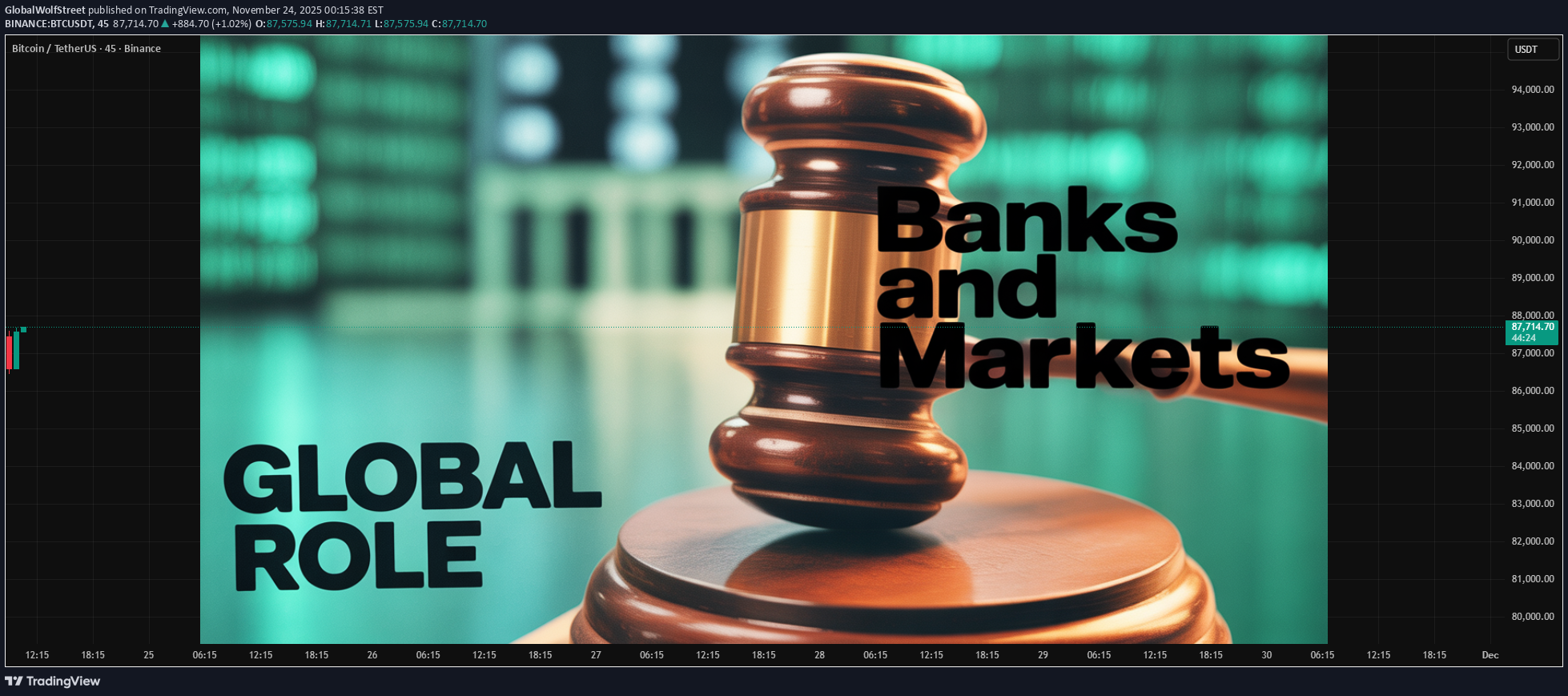Technical analysis by GlobalWolfStreet about Symbol BTC on 11/24/2025
نقش حیاتی بانکها و بازارهای جهانی در تجارت بینالملل

1. Banks as the Financial Backbone of Global Trade Banks have always played a central role in international commerce. From early merchant banking in medieval Europe to today’s digital global banking networks, banks provide the essential functions that allow trade to happen smoothly and safely. 1.1 Facilitating International Payments The most basic function of banks in world trade is cross-border payments. Exporters often demand payment certainty, and importers want delivery assurance. Banks bridge this trust gap using instruments such as: SWIFT-based international transfers Letters of Credit (LCs) Bills of exchange Bank guarantees Documentary collections A Letter of Credit, for example, ensures the exporter receives payment once shipment documents are provided and verified. This reduces default risk significantly and increases trade participation, especially in emerging markets where trust and creditworthiness are uncertain. 1.2 Financing Trade Operations Trade finance is one of the oldest and largest banking activities. Banks provide capital for: Pre-shipment finance (raw materials, manufacturing) Post-shipment finance (waiting for payment) Export credit from export-import banks Foreign currency loans to purchase goods Supply chain financing Global trade is a long cycle—goods take time to produce, ship, and sell. Banks keep the cycle running by injecting liquidity, enabling even small companies to engage in large transactions. 1.3 Currency Exchange and Forex Operations Every international transaction involves at least two currencies. Banks: convert currencies for exporters and importers provide hedging instruments (forwards, futures, swaps) stabilize businesses against currency volatility Since foreign exchange markets trade over $7 trillion per day, banks play a large role in making global trade more predictable by protecting businesses from sudden currency swings. 1.4 Risk Management and Trade Insurance Trade naturally involves: political risk credit risk transport risk currency risk legal and regulatory risk Banks partner with insurers, export credit agencies, and global institutions to reduce these risks. For example, an exporter doing business in a politically unstable country may rely on export credit insurance provided through banks. Without such risk-mitigation tools, global trade flows would shrink dramatically. 2. The Role of Global Markets in World Trade Beyond banks, global markets — stock markets, bond markets, commodity markets, and currency markets — form the infrastructure that supports the expansion of world trade. 2.1 Financial Markets Provide Capital for Expansion Stock exchanges and global bond markets give companies the ability to raise funds for: international expansion building factories and export infrastructure acquiring foreign companies research and development modernizing supply chains Multinational corporations like Toyota, Apple, or Tata operate globally because they access international investors who fund their growth. 2.2 Commodity Markets Set Global Prices International trade depends heavily on commodities—oil, metals, food grains, energy, chemicals, and more. Commodity exchanges like: NYMEX (oil and gas) LME (metals) CME (agriculture, energy) help determine global benchmark prices. These markets: ensure price transparency reduce volatility through futures contracts allow producers and buyers to hedge price risks influence shipping routes and logistics costs For example, when crude oil prices rise, global transportation and manufacturing costs increase, directly affecting trade flows. 2.3 Foreign Exchange Markets Enable Global Pricing The global forex market ensures that: companies can price goods in stable currencies exchange rates remain liquid central banks can stabilize currency movements investors can allocate capital globally Because of forex markets, a business in India can export to Japan, price goods in USD, hedge currency risk, and receive converted INR payments seamlessly. 2.4 Global Bond Markets Support Government Trade Infrastructure Governments borrow from global investors to build: ports highways airports logistics parks customs facilities These projects reduce trade barriers and enhance a country’s export competitiveness. Countries with better credit ratings borrow at cheaper rates, giving them an advantage in global trade. 3. Banks and Markets Work Together to Power World Trade Banks and financial markets are deeply interconnected. Their cooperation harmonizes global trade flows. 3.1 Banks Operate Inside Global Markets Banks participate in: currency markets commodity trading government and corporate bond markets derivatives markets This allows them to provide hedging and financing services to customers engaged in international trade. 3.2 Capital Markets Reduce Dependence on Bank Loans When companies raise equity or issue bonds, they reduce stress on banks, freeing up bank capital for trade finance. This creates a balanced financial ecosystem. 3.3 Digital Platforms and Fintech Strengthen the Relationship New technologies are transforming global trade: Blockchain-based trade finance reduces fraud Digital LCs speed up transactions Fintech exporters’ platforms simplify international payments Cross-border instant payment networks lower costs Banks and fintech firms are creating a more transparent, faster, and more inclusive global trade system. 4. The Global Role of Banks and Markets in Shaping World Trade Patterns Financial systems do more than facilitate trade—they influence who trades, what is traded, and how trade grows. 4.1 Emerging Markets Gain Access to Global Buyers Banks in developing countries partner with global institutions to integrate local businesses into world supply chains. 4.2 Financial Markets Boost Competition Open global capital markets allow companies from any country to compete on equal terms. For example: Indian IT firms Chinese manufacturing companies Southeast Asian textile exporters grew faster due to access to foreign investment. 4.3 Crisis Management and Global Stability During crises (like 2008 or 2020), central banks and global markets stabilize economies by: injecting liquidity reducing interest rates supporting currency stability protecting banks and trade credit This support keeps world trade from collapsing. Conclusion: Banks and Markets Are the Lifeblood of Global Trade World trade depends fundamentally on the smooth functioning of banks and global markets. Banks provide the trust, credit, payment systems, and risk management essential to international transactions. Global markets supply capital, set global prices, enable hedging, and ensure liquidity across borders. Together, they form the invisible infrastructure powering globalization. Without banks and markets, trade would be slow, risky, and extremely limited. With them, businesses of all sizes—from small exporters to multinational giants—can participate confidently in the world economy.
